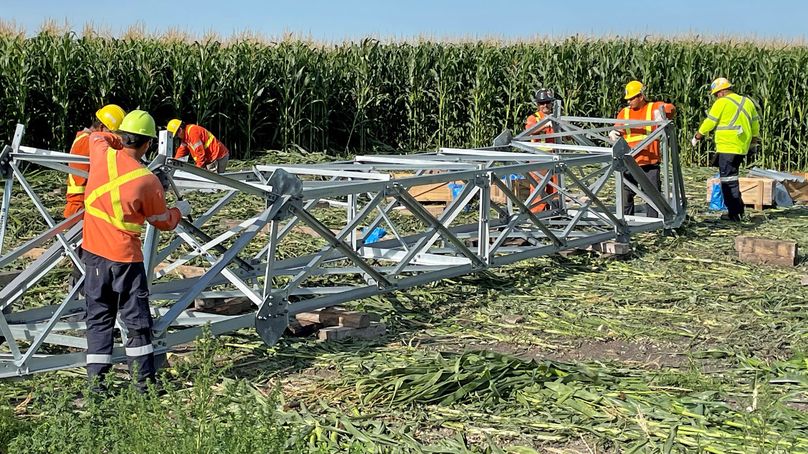This article was published in September 2022 and may be outdated.
The statistics are showing that Manitoba Hydro’s efforts to increase Indigenous opportunities on our transmission projects are gaining traction. This is particularly evident in our Indigenous employment outcomes, with Indigenous hiring on our recent transmission projects ranging between 40 to 65 per cent of total hires.
“There’s a genuine effort to promote Indigenous employment and business participation right from the planning stage through to the end of construction,” said Duane Hatley, Manitoba Hydro’s Community Liaison, Construction Services. “This effort is helping us build some very good relationships with Indigenous communities, as they want to have that face-to-face interaction with Manitoba Hydro and our contractors when there’s work happening nearby.”
Southern Manitoba project nears 55 per cent Indigenous employment
The success of these efforts is most recently demonstrated on the G79L transmission line in south-central Manitoba, where Indigenous employment is now approaching 55 per cent of the total hires as of July 2022.
When completed later this fall, the G79L line will connect our De Salaberry East Station south to Letellier Station – one of two lines required to help meet the area’s growing electricity needs and improve reliability for nearby customers.
“The G79L contract was tendered and awarded to a joint venture (JV) partnership between the Indigenous community of Birdtail Sioux First Nation and Forbes Bros. Inc,” said Jeff Strongman, Department Manager, Construction Division. “Since the work began, Indigenous employment on that contract has been no less than 40 per cent – and that number has continued to rise.”
High employment numbers on our De Salaberry–Letellier project are attributed to a few factors, including the JV having designated Indigenous engagement staff working directly with Indigenous communities over the duration of the project.
It’s an approach that provides benefits both to the community and to the contractor, as noted by Robert Throop, Labour Relations Manager, Forbes. Bros. in relation to the JV’s previous work on our Birtle Transmission Project in Paths Forward, Celebrating Indigenous Business in Canada 2022.
“Without the support of these communities and partners, we would not be where we are today,” said Robert. “In many of the places we work, we rely on the local knowledge, local workforce and communities to help support our work and help us remain competitive.”
Learning from past projects to benefit future ones
The evolution in the approach to transmission construction began several years ago with the Bipole III Reliability Project and the Manitoba-Minnesota Transmission Project (MMTP). “These projects really paved the way for our organization to demonstrate what is possible when we have a consistent, coordinated approach to promoting Indigenous participation,” said Glenn Penner, Manitoba Hydro’s Director of Construction. “We put a lot of groundwork in with contractors and we’re seeing great results. We’ve also seen a rise in the number of Indigenous-owned contractors bidding on our projects.”
What the numbers don’t fully show is the impact of the training, skills upgrading, and employment experiences that have been gained. “It’s supporting further growth of a Manitoba-based Indigenous workforce,” said Duane, “We’re seeing workers from Indigenous communities bring their skills and expertise from project-to-project and grow their careers in the transmission construction sector.”
Read the full article noted above in: Paths Forward: WaterPower Canada celebrates Indigenous businesses in Canadian hydropower.

